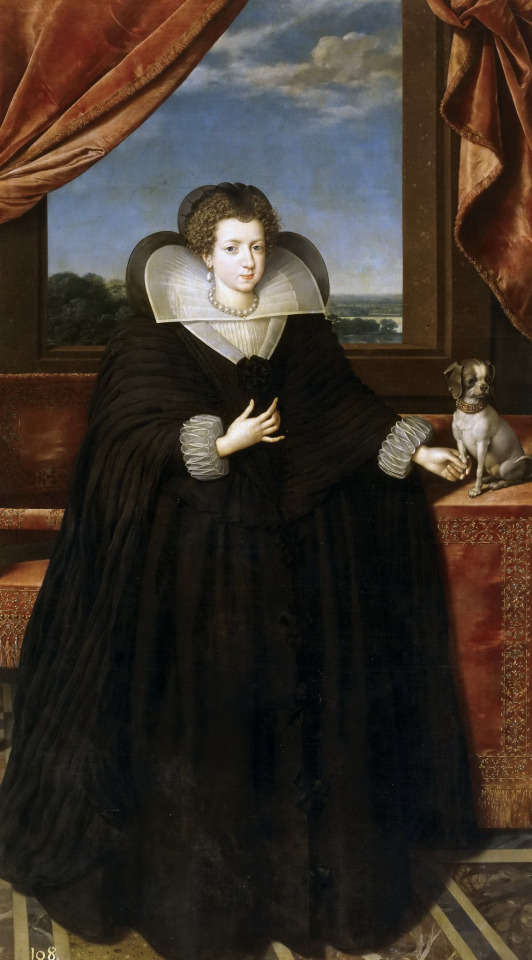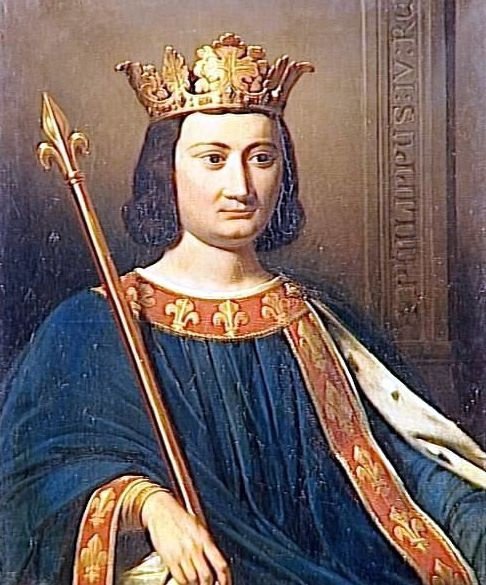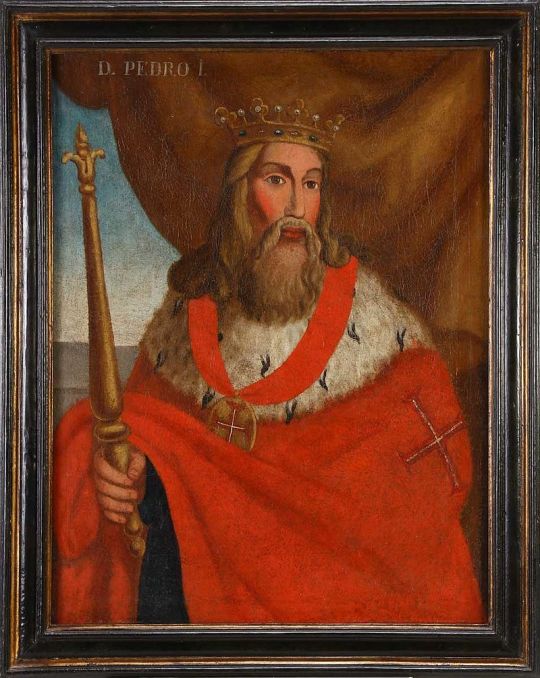#philip iv
Photo

Frans Pourbus the Younger (Flemish, 1569-1622)
Isabella of France, wife of Philip IV of Spain, c.1615-21
Museo del Prado, Madrid
#Frans Pourbus the Younger#flemish art#flanders#isabella of france#philip iv#art#fine art#fine arts#classical art#france#spain#dogs in art#oil painting#painting#philip iv of spain#1500s#1600s
96 notes
·
View notes
Text


As unrealistic as me thinking, for like one (1) ((or TWO?????)) whole years, that i was going to colour this in
#those are portraits btw. meanwhile i am procrastinating worse than a habsburg monarch with a revolt the next two states over#dissertation isnt going to write itself and if i dont write it ill be writing my will. And Yet. AND YET.#16th century#17th century#history art#charles v#philip ii#philip iii#philip iv#charles ii#charles ii of spain#carlos ii#emperor charles v#philip ii of spain#philip iii of spain#felipe iv#philip iv of spain#charles v & i#history shitposting#historical fanart#my art#no really i had this sitting in my sketchbook for a year at least#so maybe i have procrastinated on worse#pippa 4 is Uncomfy bc thats his Direct Spawn lmao#you know maybe i will colour it in if i procrastinate on my bloody thesis enough. but in the meantime ive deprived absolutely no-one#of seeing this for at least a whole year so. That Ends Now plus ultra bitches
11 notes
·
View notes
Photo


Why did the Templars just disappear in the early Middle Ages when they were so powerful?
They didn’t disappear. They were purged.
Most of them, anyway. Think Order 66 with swords.
But in order to understand why the Knights Templar were rounded up on Friday the 13th, 1307, you need to understand the context of the time in which it happened. Several factors contributed to the fall of the Templars, but the biggest one was this guy:

This is Philip IV, King of France, who ruled from 1285 until his death in 1314. He was the main architect in the fall of the Templars—but I’m getting ahead of myself.
The fall of the Knights Templar was set in motion when the Siege of Acre ended in 1291. When it fell to the Mamluk forces, it marked the loss of the entire Holy Land for Christendom. Acre had been the last piece of territory in the Holy Land held by Christians, so its fall was a grievous blow to Europe. It was an unmitigated disaster.
That’s where the Templars come in.
The Poor Fellow-Soldiers of Christ and the Temple of Solomon, or Templars for short, were originally established after the Crusaders captured Jerusalem at the end of the First Crusade. Their mission was to guide and protect pilgrims on the road to the holy city, as traveling in those days was fraught with peril. Those who joined the order in those early days took vows of poverty, chastity, piety and obedience, and their sigil even showed two men riding on the same horse to emphasize the Templars’ rejection of worldly goods.
Their self-imposed poverty didn’t last long, however. The Templars soon found a powerful advocate in a priest named Bernard of Clairvaux, who wielded a great of amount of influence in the Catholic Church. Clairvaux was so psyched about the Templars that he wrote books talking about how awesome they were, and this got everybody so pumped that in 1189 Pope Innocent II issued a papal bull saying that the Templars were exempted from paying taxes to anyone and didn’t have to obey local laws or customs. Instead, the Templars would answer only to the Pope himself. With this kind of public prestige, the Knights Templar soon became a popular charity: powerful lords and peasants alike donated their money, businesses, and even vast tracts of land to their cause, and sons from noble families from across Europe clamored to join them.
The Order quickly grew to be one of the most powerful military and financial institutions in Europe. They achieved famous victories such as the Battle of Montgisard in 1177, when some 500 Templar knights, backed up by a force of only several thousand foot soldiers, took on more than 26,000 enemy soldiers and absolutely crushed them. At the height of their power, the Templars were so rich and so powerful that even the crowned heads of Europe didn’t want to cross them. They controlled vast tracts of land throughout Europe and the Middle East, built massive cathedrals and castles, and were heavily involved in manufacturing as well as imports and exports, which is why they controlled a large fleet of trading ships and an even larger navy. They even set up an early kind of banking system and bought the whole freaking island of Cyprus.
A century after their founding, the Templars had become an independent state in all but name. Some historians have even called them the first true multinational corporation.
But when Acre fell and the Christians lost their grip on the Holy Land, the Templars lost their reason for being. Even as they grew in power they never neglected their original purpose of protecting pilgrims on the road to Jerusalem. But now that the Holy Land was lost, there weren’t any pilgrims to protect. The loss of the Holy Land also did a lot to diminish their reputation in the eyes of peasants and nobles alike, some of whom even blamed them for the catastrophe that Christendom had suffered. Public support for the order began to wane.
I mean, imagine that you’re a European king or feudal lord for a just second. The Templars have returned to Europe in the aftermath of the Third Crusade. Maybe they’re even travelling through your land. They’ve got a massive army, a massive navy, they don’t pay taxes, they’re richer than sin, and they can do pretty much whatever the hell they want because the laws literally don’t apply to them. The only person with the authority to command the Templars to do anything is the Pope, and Rome’s a long way away. If they decide to camp outside your castle and eat your food and drink your wine for three weeks as your “guests,” there’s nothing you can do about it. The idea of such a powerful force with so little accountability would have made you pretty uneasy. And the Templars themselves did little to relieve that anxiety. Many of them could, and did, take full advantage of their immunity to local laws and customs. The phrase “drunk as a Templar” became popular for a reason. To be sure, all this might have been more easily borne before the tide of the Crusades turned against the Crusaders, but now these jokers are walking around all lordly-wise and they’re not even winning anymore. All of this made a lot of very powerful people very nervous and increasingly disgruntled.
The point I’m trying to get at here is that the Templars were already having some serious PR issues even before Philip IV of France came along. Speaking of which…
See, Philip IV came to the French throne in 1285, and by 1303 he found himself and his kingdom deeply in debt after several failed—and very expensive—military campaigns. King Phil couldn’t afford to pay for all that on his own, so he went to the only people in Europe who could loan him the cash he needed. Those people—you guessed it—were the Templars, and he opened a huge tab with them that only got larger with time. And since King Philip seems to have had the financial acumen of a freaking goldfish, it didn’t take long for him to bring his kingdom into dire straits.
Now, Philip shared many of the same concerns about the Templars as his contemporaries, but he was probably much more worried about how much money he owed them. He may have even feared that the Knights would try to overthrow him if he wasn’t able to pay them back—and he damn sure wasn’t able to pay them back, not after borrowing such enormous sums.
In short, all of his biggest headaches seemed to trace back to the Templars. So what did he decide to do?
Get rid of the Templars, of course. By destroying them, he could eliminate a potential threat to his authority, wipe out his debt, and replenish his kingdom’s coffers all in one fell swoop.
But the Templars were traditionally protected by the Pope, so Philip IV’s first task was to remove their shield of papal authority. He did this by committing an act almost as audacious as his persecution of the Templars: stacking the papacy. Here is when we first see his Machiavellian brilliance on full display, for it was through this web of machinations—which included bribery, intimidation, and even violence—that he was able to get a puppet Pope, Clement V, installed in the Vatican. Clement issued the edicts, but it was Philip who pulled his strings. The King of France now had de facto control over the Catholic Church, and he used that control to have Pope Clement draw up a long list of charges against the Templars. These included blasphemy, heresy, sodomy, idol-worship and even witchcraft. He also accused the Templars of performing obscene rites in their initiation ceremonies, which was a clever charge to make because the Templars kept the details of those ceremonies a closely-guarded secret. No one knew what those ceremonies entailed, and the Templars were forbidden by oath from discussing them with outsiders, so they couldn’t really refute the charges against them.
Needless to say, few historians take these any of these accusations seriously. They were almost certainly fabrications concocted by the king himself.
Next, Philip lured all the Templar leaders to France on a pretext. He claimed that he wanted to discuss merging them with another knightly order, the Knights Hospitaller. All the most powerful Templars heeded his call and came to France. Many were accompanied by lavish baggage trains, which Philip was no doubt counting on. He then issued secret instructions to all his officials in every city and town where the Templars were staying. So did Pope Clement, at Philip’s behest.
In other words, these orders were sent out not just across France but across Europe, to every village, city, castle and keep with a Templar presence. It was received by princes, judges and civil officials in Spain, England, Germany and Cyprus. But no matter who they were sent to, the orders were the same:
At daybreak on Friday the 13th of October, 1307, every Templar in sight was to be arrested. Nothing was to be said to anyone about the raid before it happened, on pain of death if the plot was given away.
The plan went off like clockwork. It took the Templars completely by surprise. At dawn on the appointed day, they suddenly found themselves under attack all over the Continent. Some managed to escape, but many of them were rounded up and imprisoned or killed. Those unlucky enough to be captured, including their Grand Master Jacques du Molay, were tortured until they confessed to the trumped-up charges that had been leveled against them. Many of them died from this terrible treatment or were burned at the stake, and Pope Clement officially dissolved the Knights Templar several years later. Du Molay himself was eventually burned at the stake along with many of his comrades.
But the immense wealth that Philip had planned on seizing never materialized. The vast treasure the Templars brought with them to France was never recovered, and no one knows what happened to it. We do know that a Templar fleet of more than twenty vessels was anchored in the French city of La Rochelle before the purge and vanished overnight shortly after it began, but no one knows where it went. Some believe that the Templars used those ships smuggle their treasure out of France just in the nick of time, but there’s no way to know for certain. And even if they did, the treasure is just as lost to us today as it would have been had it stayed in France.
Nor does anyone know for certain what happened to the Templars who were lucky enough to survive the purge. Some of them no doubt faded into the background or lived the rest of their lives in hiding. Others may have vanished into the ranks of the Knights Hospitaller. A lucky few might have been able to bribe or plead enough for clemency if they were caught.
There are stories, though. One of the most persistent legends says that some of the remaining Templars managed to make it to Scotland, where they later fought for Robert the Bruce at the Battle of Bannockburn in 1314. The Templars had strong connections with Scotland that dated back for more than a century, and Robert had little reason to honor the papal decree to purge the Templars. The pope had excommunicated him and his entire country after he murdered one of his rivals, John Comyn, inside a church on February 10, 1306, and now the King of Scots was fighting a brutal war against the English. If the Templars did indeed show up on his doorstep, he would have been happy to have such experienced and fearsome warriors on his side. But to date, no solid evidence has been found to give this theory credence.
Another legend—and my personal favorite—claims that some of the Templars fled to the Swiss Alps. In fact, there are stories in Switzerland even today of “armed white knights” who helped the Swiss crush an invasion by Duke Leopold of Hapsburg in 1315, just a few years after the purge. Could these “white knights” have been Templars? If they were, they picked a perfect spot. The Swiss Alps are formidable even with today’s technology, so they would have been an ideal location to hide in. They would also have been a great place for the Templars to put their expertise to good use. In fact, some claim that these fugitive Templars trained the very first Swiss pikemen, who went on to win renown as the most fearsome fighters in Europe. It is, after all, fairly remarkable how quickly the Swiss, who had been simple subsistence farmers for centuries before Duke Leopold’s invasion, became some of the finest warriors of their day. The story even goes so far as to claim that the Templars also taught the Swiss their secrets of banking and finance, and that those same secrets eventually evolved into the unique banking system still used in Switzerland today.
But by far the most fantastical—and least likely—story says that a group of Templars fled to North America, and that they used old maritime routes first pioneered by the Vikings centuries earlier to island-hop across the North Atlantic until they landed somewhere along the upper northeastern seaboard. Few historians take this assertion seriously, however, as there is almost no archaeological evidence to back it up.
Ultimately, as with the final destination of their fabled wealth, the true fate of the last Templars will likely never be known.

#philp iv#kemetic dreams#templars#knight templar#switzerland#north america#duke leopold#english#duke#john comyn#scotland#europeans#european history#philip iv
45 notes
·
View notes
Text


@cparti-mkiki HAPPY BIRTH 🤡🤡🤡🤡🤡🩷🩷🩷🩷🩷🩷🥳🥳🥳🥳🥳🥳
#Post maybe incomprehensible to everyone else idk i dont watch#Succession#Philip iv#My art#Thank you for ANOTHER YEAR being my partner in crime hope you will have. A good one. Please 🤡💀🩷#Hope you like it jestie etc etc <3 <3 <3
8 notes
·
View notes
Photo










Royal Birthdays for today, April 8th:
Peter I, King of Portugal, 1320
Philip IV, King of Spain, 1605
Mary Stuart, English Princess, 1605
Marie Caroline of Austria, Crown Princess of Saxony, 1801
Christian IX, King of Denmark, 1818
Albert I, King of Belgium, 1875
Carlos Hugo, Duke of Parma, 1930
Iskandar of Johor, Sultan of Johor, 1932
Lalla Amina, Princess of Morocco, 1954
Leah Isadora Behn, Daughter of Martha Louise of Norway, 2005
#marie caroline of austria#christian ix#albert i#mary stuart#philip iv#peter i#carlos hugo of parma#Iskandar of Johor#lalla amina#Leah Isadora Behn#royal birthdays#long live the queue
20 notes
·
View notes
Text

4 notes
·
View notes
Photo








María Inés Calderón (1611 – 1646 )
“A woman who apparently was not beautiful, but she had a lot of grace and charm. In addition to reciting, singing and dancing very well.”- Elvira Menéndez
María Inés Calderón, known as La Calderona and Marizápalos, was the most important actress in the Spain of the seventeenth century, who became the mistress of King Felipe IV and mother of his illegitimate son, Juan José of Austria. La Calderona was involved in a relationship with Ramiro Pérez de Guzmán, Duke of Medina de las Torres, at the time Felipe IV first saw and got smitten by the actress-singer on her debut at the Corral de la Cruz theatre in Madrid in 1627. But when the king got in the way, the lover had no choice but bow his head. La Calderona became the favorite of Felipe IV.
Enamoured of the red-headed actress, Felipe IV installed his lover in a balcony overlooking the square, a decision that flew right in the face of convention as these seats were meant to be the exclusive preserve of the aristocracy. After spotting her rival sitting in the posh seats, the queen Isabel de Borbón flew into a rage and threw La Calderona out of her love nest in the palace. To compensate, the rather sneaky king, then ordered that a secret balcony to be built under an arch. In this way, his lover could attend events at the Plaza Mayor and remain out of sight.

Upon the birth of her son in 1629, La Calderona lost the custody of him despite her protests. Her relationship to the king ended the same year. There were rumors at the time that her son was fathered by Ramiro Pérez de Guzmán. La Calderona was forced to become a nun against her will. Felipe IV ordered her entry into the monastery of San Juan Bautista of Valfermoso de las Monjas, in Alcarria, where the interpreter would lose contact with life, the theater, her son. In 1642, the King recognized Juan José officially as his son, and Juan José began his life's career as a military representative of his father's interests.
It was said that she died in closing, already under the name of Mrs. Maria de San Gabriel, Abbess. But it has also been written that she fled: that she managed, on the one hand, to escape from God's mandate and escape, along with a bandit, to the Sierra de la Calderona (Valencia) and, in another version, that she returned to Madrid, where she would welcome the guild of actors: « A kind of union that gave relief to interpreters who were in poor condition or who were already older. There seems to be data that helped her. Which would mean that she did not die in the convent as they officially said ».
The few concrete data of María Inés Calderón have served to increase the legend. Also regarding her family. It is not uncommon to find references to Pedro Calderón de la Barca as father of the creature. But far from it. It seems that, being very small, appeared at the door of Juan Calderón, a lender of the theater world and father of Juana, also an actress, although not as renowned as «La Calderona».
(x)(x)
#Maria Inés Calderón#La Calderona#Felipe IV#Philip IV#Juan José de Austria#Juan José of Austria#women in history#Spanish history#Carmen Maura#Paisaje con figuras#documentary
22 notes
·
View notes
Text



Gabino Diego as Philip IV (part I)
6 notes
·
View notes
Text
read this book (in a fruitless attempt) to better understand the details of the thirty years’ war and the author gets her digs at these people at every chance she gets:
“In the Louvre the King [Louis XIII] lay on his huge bed day after day, but his unhealthy body, which had for the last years never seemed truly alive, was unable to die. The pulse beat obstinately on in the wasted skeleton. Day after day he lay almost motionless, sometimes sinking into troubled sleep, sometimes half-conscious, sometimes speaking, while his wife cried noisily at his bedside.”
“Richelieu, though never popular, had evoked a certain apprehensive admiration. The people did not feel the same about Cardinal Mazarin. The dapper little Sicilian with his petty personal vanities, his childlike ostentation, his delight in craft and cunning, had few impressive qualities. Equally he had not the comprehensive genius of Richelieu; he never understood or managed to control the internal politics of France.”
“Philip IV, having lost both his wife and only son within a few weeks of each other, began, with indecent haste, to seek out a young bride; he was not a very prepossessing husband, old and glum for his forty-odd years, dumbly stupid; as a ruler, a useless idol. He was devoted only to his one remaining child, the scatter-brained little Infanta who was despite the formalities of Madrid and the splendours of Versailles remained through life a foolish, impulsive, perpetually sweet-tempered schoolgirl.”
#'his wife cried noisily at his bedside'#history#french history#spanish history#quotes#i do think it's a well-written and extremely comprehensive book#however#there are too many ppl to keep track of#and many of them either have the same name. similar names. or multiple names/titles#the book is The Thirty Years' War by C.V. Wedgwood#it's from like 1939#which adds an interesting flavor to her perspectives on war i think#shannon says#louis le juste#anne d'autriche#philip iv#cardinal richelieu#cardinal mazarin#c.v. wedgwood
11 notes
·
View notes
Photo

Philip IV of Spain, Velazquez, c. 1656
When all you are doing in front of a painting is confirming your view of it, it’s time to take a rest.
T.J. Clark, “If These Apples Should Fall”
2 notes
·
View notes
Photo

This time, I’m back with another CGI makeover! It’s a young Philip IV of Spain done in the style of Pixar!
Pixar do this kind of film please I beg of you
#pixar#philip iv#felipe iv#spain#photomanip#historical photomanip#edit#cgi#hapsburg#habsburg#royalty
2 notes
·
View notes
Text
Marguerite of Provence, Queen of France
Marguerite of Provence, Queen of France
Marguerite of Provence from a fifteenth century manuscript
Raymond-Berengar V, Count of Provence, married Beatrice of Savoy in 1219. Their eldest daughter Marguerite was born in the spring of 1221 in Forcalquier, and they would have three more daughters, all of whom would become queens. Marguerite married Louis IX of France, Eleanor married Henry III of England, Sanchia became queen of the…

View On WordPress
#Beatrice of Provence#Beatrice of Savoy#Blanche of Castile#Charles of Anjou#Count of Provence#Count of Toulouse#Eleanor of Provence#French history#King of France#King of Sicily#Louis IX#Marguerite of Provence#medieval history#Philip III#Philip IV#Queen of England#Queen of France#Raymond VII#Raymond-Berengar V#Sanchia of Provence
2 notes
·
View notes
Text
Maedhros 🤝 Philip IV the Fair(aka the Iron King)
6 notes
·
View notes
Text

@cparti-mkiki told me to delete this so I'm posting it >:-)>
#17th century#history shitposting#Louis xiv#Charles ii of spain#philip iv#Leopold i#Eugene of savoy#Versailles#((not really but Hey))#Baroque memes#Baroque#alignment chart
19 notes
·
View notes
Text


Shield of Achilles by Philip Rundell, originally modeled and cast in plaster by John Flaxman
English, 1821-1822
Silver-gilt convex shield
Royal Collection Trust (acquired by George IV and displayed at his coronation banquet)
#shield of Achilles#Iliad#mythology#Achilles#Homer#gold#silver gilt#shield#art#John Flaxman#Philip Rundell#King George IV#Royal Collection Trust#neoclassical#neoclassicism
1K notes
·
View notes
Text



putting them in the anime blender that is my artstyle
(last one's og)
#futurama#bender bending rodriguez#philip j fry#turanga leela#cgdoodles#ive been watching this thing for the first time and its been like. walking a mine field#either i have fun or i cry#anyway happy free from cringe sunday or smth
2K notes
·
View notes